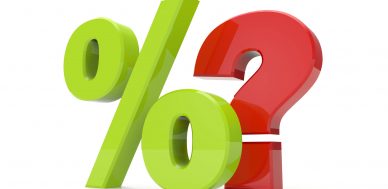Where Are Interest Rates Headed Next?
There’s a lot of uncertainty around interest rates these days.
In 2015, the U.S. Federal Reserve started to raise rates. Why? Because it wanted to make sure the U.S. economy didn’t heat up too much. It did this in a very drastic way as well. The rate set by the Fed went from zero in late 2015 to around 2.5% in late 2018.
In early 2019, the Federal Reserve had a change of heart and started to cut rates aggressively. So far this year, it has cut interest rates a few times.
Now, there are a lot of questions regarding what the Fed could do in the coming quarters.
As all this happens, there are two camps of thinkers forming: one camp thinks the Fed has already done enough and not much is needed anymore. They believe the rate cut was needed to give the U.S. economy some breathing space from trade tensions, the slowing global economy, and other such things.
But the other camp says rates in the U.S. could go much lower and the Federal Reserve may be forced to print more money. There’s even noise suggesting that negative rates could be coming.
Look at the chart below; it plots the federal funds rate, which is the interest rate that the Fed sets.
Chart courtesy of StockCharts.com
The Dire Consequences of Interest-Rate Uncertainty
Dear reader, I understand that an average investor may not care about what the Fed does. I personally don’t like predicting the cuts and hikes. You must, however, understand one thing: the uncertainty over interest rates could have very dire consequences. It shouldn’t be taken lightly.
As uncertainty intensifies, investors need to keep a close watch on the derivatives market. It could be a ticking time bomb, and could cause the next financial crisis.
Let me explain.
At the end of the second quarter of 2019, the top U.S. banks had derivatives with notional value of about $205.0 trillion. This not a misprint; the figure really is in the trillions. (Source: “Quarterly Report on Bank Trading and Derivatives Activities: Second Quarter 2019,” Office of the Comptroller of the Currency, last accessed October 25, 2019.)
At the end of the second quarter, $151.9 trillion in notional worth of derivatives, or 74.1% of all derivatives, were based on interest rates.
See an issue here?
Let me clarify a little more.
Derivatives are contracts between two parties. Essentially, one party thinks interest rates will go up and the other party thinks the rates will go down. There’s usually one winner and one loser.
You really have to wonder what would happen if we see a shock regarding rates in the United States.
Understand this: not the entire $151.9 trillion of notional worth has to get impacted. Just 10% of these derivatives coming under fire could create counterparty risk throughout the U.S. financial system.
Don’t forget, it was derivatives that caused the economic slowdown and financial crisis of 2008–2009. Now there are many more derivatives on the line, so it wouldn’t be wrong to say that the next financial crisis could be much bigger than the last one.
